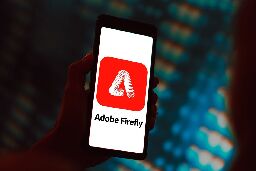Adobe’s ‘Ethical’ Firefly AI Was Trained on Midjourney Images



bloomberg.com
When Adobe Inc. released its Firefly image-generating software last year, the company said the artificial intelligence model was trained mainly on Adobe Stock, its database of hundreds of millions of licensed images. Firefly, Adobe said, was a “commercially safe” alternative to competitors like Midjourney, which learned by scraping pictures from across the internet.
But behind the scenes, Adobe also was relying in part on AI-generated content to train Firefly, including from those same AI rivals. In numerous presentations and public postsabout how Firefly is safer than the competition due to its training data, Adobe never made clear that its model actually used images from some of these same competitors.
You are viewing a single comment
Isn't this causing a huge degradation in quality? It's like compressing an image over and over again. Those "AI" models can only generate things on what they know, and already have a very real issue of looking samey because of it. So if we train models on that, and then another model on the new model, and repeat this over and over again, we'd end up with less and less quality & variety for each model, no?
I suppose the AI images submitted are done so because they turned out good, so there’s still a human selection process there. It’s not as bad at automatically feeding random generated images into the training.
But are they? The amount must be minuscle as searching and selecting costs time. What impact can thoughtful selected images have?
Adobe trains on images submitted to their stock image marketplace. Deciding to submit is the first selection step. Then there is some quality control by Adobe; mainly AI powered, I'd guess. Adobe also has the sales data (again, human selection) and additional tracking data; how many people clicked a thumbnail and so on.
What people imagine here about quality loss is completely divorced from reality.
That's not what anyone would do in reality, though. In reality, when you train an AI model on AI output you get a quality increase, because the model learns to be better at doing the things it's supposed to do, while forgetting the irrelevant. Where output looks samey, it's because different people are chasing the same mainstream taste.
How do you get a quality increase if you by definition cut down on the variety of the generative aspects? That doesn't make any sense.
Put like this, because too much variety is the biggest problem in terms of quality. People don't want variety in terms of, say, number of limps or fingers. People have something specific in mind when they prompt an AI. They only want very limited and specific variability.
In a sense, limiting variety is the whole point of the AI. There is a vast number of possible images. Most of them would be simply indistinguishable noise to us. The proportion we would consider a sensible picture is tiny. We want to constrain the variety to within this tiny segment.
But "AI" generated images don't suffer from too much variety, they suffer from looking samey. It's the opposite of what you're arguing about. Limbs aren't really the issue here since this is about Midjourney, which handles that part fairly well already.
Adobe trained its AI "Firefly" on its stock library (and other images). Their library contains AI images. It's unlikely that these are all from Midjourney.
I'm not sure what you mean by samey. As I said, people chase the same mainstream taste. If the images from one service looks samey, then they probably figure that's what the customers want. It's also possible that you only recognize this type of image as AI generated.